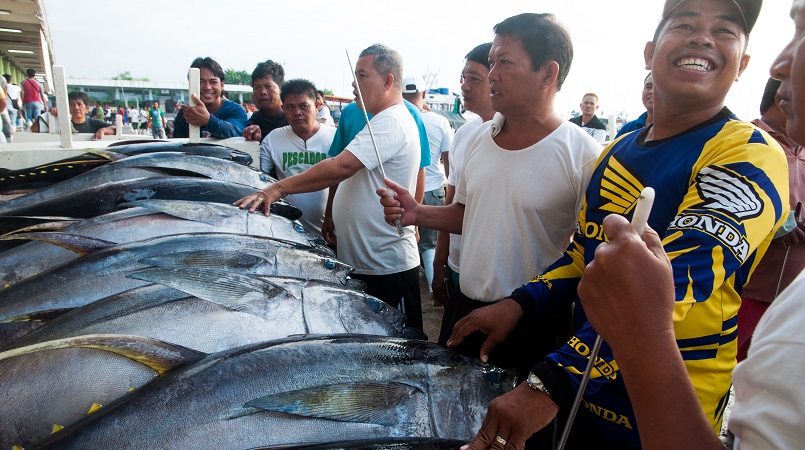
The value of the Philippines’ tuna exports in 2014 dropped by 30 percent despite an increase in total volume, according to a report.
The report was prepared for the ongoing 11th Regular Session of the Western and Central Pacific Fisheries Commission (WCPFC) scientific committee in Pohnpei, Micronesia.
According to the provisional data submitted by the Philippine delegation, the value of tuna exports last year amounted to US$459.83 million, down from US$664.50 million in 2013.
The bulk of export revenues came from canned tuna which reached 58,660 metric tons (MT).
Fresh, chilled and frozen tuna products came next with export volume totaling 28,808 MT.
The country also exported 1,460 MT of dried and smoked tuna products.
Overall export volume went up to 88,928 MT aided by a 98 percent increase in the volume of canned tuna exports which topped 58,660 MT in 2014 – up from just 29,660 MT in 2013.
While the volume of tuna exports last year increased, it still is way below the 2010 and 2011 volume of 110,489 and 94,031, respectively.
Major export destinations for Philippine tuna exports include the U.S., Japan and the United Kingdom.
The rise in export volume coincided with the increase in tuna landings last year totaling 384,942 metric tons from both commercial and municipal fishing operations.
General Santos City continues to account for the bulk of the country’s total tuna landings.
In 2014, the Philippine Fisheries Development Authority office in General Santos City reported a total of 193,867.55 MT in fish landings – about 90 percent are tuna and tuna-like species.
The bulk of these landings, at 92,387.36 MT, however are now comprised by frozen tuna of which 65,493.15 MT are imported from Papua New Guinea, Taiwan, Japan, Marshall Islands and Korea.
General Santos City is home to six of the country’s tuna canneries. The two others are located in Zamboanga City.
“The estimated 124,000MT annual output of eight canneries is mostly supplied by landings from Philippine purse seiners and ring netters, both local vessels and via carriers from overseas operations,” the Philippine report said.
In a related development, the Philippines also reported to the WCPFC that the 37 Filipino tuna catcher vessels operating in the Pocket 1 High Seas were able to land 28,634 MT in a 9-month fishing operation.
“A total of 28,634 tons of fish was caught in HSP1 for 2014, translating to a catch-per-unit effort of 10.73 tons per vessel per fishing day,” the report added.
The Philippine delegation said the Filipino fishing vessels were able to accumulate a total of 2,669 fishing days for an average of 2.91 sets per fishing day with an average catch of 10.73 tons per set.
The Philippines was granted a ceiling of 4,659 fishing vessel days.
In 2011, the Philippines was granted exemption to the total ban of purse seine tuna fishing in four pockets of High Seas imposed by the WCPF as part of conservation measures by its member-countries.
In granting the exemption, the WCPFC however limited the Philippines to fishing vessels with less than 50 MT load capacities.
The four pockets of high seas were closed to tuna purse seine operations in 2009.
High Seas Pocket 1, an area of about 560,000 square miles, is located east of Indonesia and north of Palau.
The regular session of the WCPFC scientific committee started last August 5 and will end on August 13.
